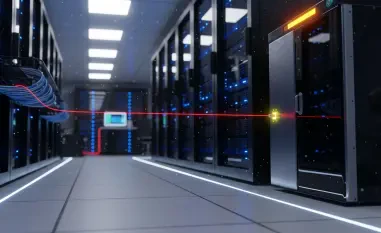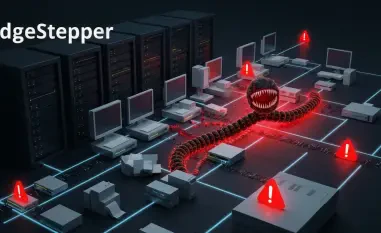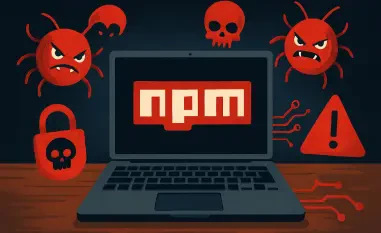Amid growing digital transformations, the Middle East confronts complex cybersecurity challenges intricately tied to regional tensions and geopolitical ambitions. As businesses and governments expand their online presence, threat actors refine methods to exploit vulnerabilities, underscoring the urgent need to understand this evolving cyber-espionage landscape. One intriguing aspect is the rise of cyber groups like Marbled Dust, believed to be affiliated with Turkish interests, actively targeting sensitive infrastructures, including the Kurdish military in Iraq.
Overview of Cyber Espionage in the Middle East
Cyber threats in the Middle East are intensifying, driven by geopolitical rivalries and strategic interests among regional and global powers. The region’s importance as an economic hub and its geopolitical position make it susceptible to varied cyber threats, from espionage to the disruption of critical infrastructure. Key players include state-affiliated actors and organized groups targeting government networks and telecommunications. Technological advancements have enabled these entities to deploy increasingly sophisticated attacks, revealing vulnerabilities in cyber defenses and posing heightened risks to national security.
Marbled Dust: An Emerging Threat
Technical Analysis of Marbled Dust’s Recent Activities
Marbled Dust’s operations spotlight a significant escalation in threat intelligence due to its advanced techniques and strategic targeting. The group exploits vulnerabilities like the zero-day CVE-2025-27920 in Output Messenger, highlighting its adeptness at unauthorized file access beyond specified directories. The use of malicious code, such as OM.vbs and Golang-based backdoors, illustrates a comprehensive infiltration strategy aimed at compromising sensitive data and maintaining system control. These capabilities suggest a high level of sophistication in both access methods and deployment of exploits.
Patterns and Historical Context
Marbled Dust’s cyber campaigns reveal a pattern consistent with state-driven objectives, targeting institutions vital to geopolitical interests across the Middle East and Europe since 2019. Prior campaigns demonstrate a focus on exploiting internet-facing vulnerabilities, underscoring the group’s strategic intentions aligned with infrastructure disruption. By tracing its activities, clear parallels emerge with other known groups, indicating shared methodologies or a collaborative network in the cyber domain. The preference for targeting government and telecommunications sectors further emphasizes its alignment with broader state objectives.
Challenges in Addressing Cyber Espionage
Identifying and neutralizing cyber threat actors such as Marbled Dust presents significant challenges due to their sophisticated techniques and ability to adapt quickly. Technical barriers include the rapid evolution of attack methods such as zero-day exploitation, necessitating robust vulnerability management protocols. Organizational hurdles arise from fragmented communication across sectors, slowing response times and reducing threat mitigation effectiveness. Strategic solutions involve enhancing cross-industry collaboration and adopting proactive cyber defense measures to counteract evolving threats.
Regulatory and Compliance Landscape
The regulatory environment in the Middle East is evolving, with new cybersecurity standards and regulations aimed at enhancing organizational resilience. Current frameworks focus on safeguarding sensitive data and improving incident response capabilities, yet compliance varies considerably across regions and sectors. The impact of these regulations on cybersecurity practices is significant, encouraging investment in security technologies and fostering awareness. Future developments are likely to include more stringent guidelines to address dynamic threat landscapes and technological advancements, driving continuous improvement in cyber defenses.
The Future of Cyber Espionage in the Region
Emerging technologies such as artificial intelligence and quantum computing are set to revolutionize cybersecurity, presenting new challenges and opportunities. These advancements will redefine threat actor capabilities, requiring innovative strategies to anticipate and counteract potential exploits. Predictions indicate a further increase in targeted attacks, pushing for the adoption of cutting-edge security practices to mitigate risks. Potential market disruptors include pioneering security firms leveraging new methods to outpace threat evolutions, providing opportunities for enhanced cross-regional cooperation in defense initiatives.
Conclusion and Recommendations
The Marbled Dust threat underscores the advanced capabilities of state-aligned cyber-espionage actors and highlights vulnerabilities in current cybersecurity protocols. For stakeholders, reinforcing patch management and improving incident response are crucial steps to mitigate risks effectively. Policymakers must advocate for tighter regulations and foster innovation in defense technologies. Collaborations across sectors and regions will be vital in preventing cyber threats from escalating further, ensuring robust security in an increasingly interconnected digital landscape.













